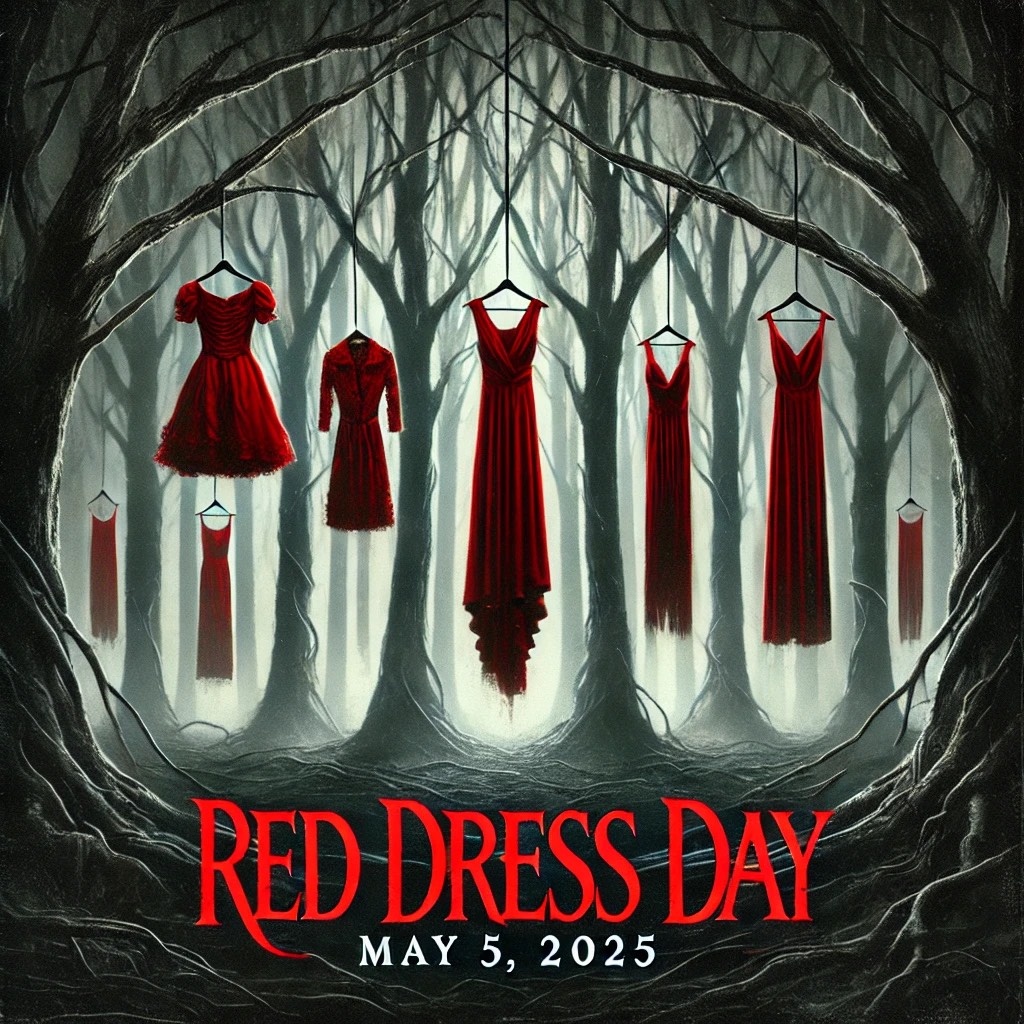Here In the House of Mirrors
Red Dress Day: Honouring the Voices That Still Echo

On May 5th, red dresses begin to appear in windows, from trees, across fences and balconies—flowing, still, and empty. They move with the wind, but each one represents a story that stopped moving far too soon.
This is Red Dress Day in Canada. A national day of awareness for Missing and Murdered Indigenous Women, Girls, and Two-Spirit People (MMIWG2S). It’s a day rooted in remembrance. A day about presence—about making space for lives that were taken, and stories that continue through the strength of family, community, and culture.
The Red Dress: A Powerful Invitation to Remember
The red dress, now a widely recognized symbol, began with the work of Jaime Black, a Métis artist who created the REDress Project in 2010. Her idea was simple—but emotionally resonant. She placed red dresses in public spaces as visual representations of Indigenous women who are no longer here, either through violence or disappearance.
The dresses are intentionally empty. That emptiness isn’t about absence—it’s about remembrance. It’s a visual way to hold space, to say: They mattered. They still do.
Red was chosen because, in many Indigenous cultures, it’s a sacred color. Some believe it helps guide spirits home. Others see it as a symbol of life, strength, and protection. And as the red dresses ripple in the breeze, they remind us that the wind carries more than air—it carries memory.
The Stories Behind the Symbol
The statistics are troubling. Indigenous women and girls are significantly more likely to experience violence or go missing than other women in Canada. That reality is not rooted in one moment—it’s connected to decades of displacement, underfunding, and systems that haven’t always responded with care or equity.
But Red Dress Day isn’t about statistics. It’s about people. Families. Loved ones. Communities. It’s about the auntie who never came home, the sister whose case remains unsolved, the daughter whose laughter still echoes in the hearts of those who raised her.
The 2019 National Inquiry into Missing and Murdered Indigenous Women and Girls offered a deep and difficult reflection on this national crisis. Its final report—Reclaiming Power and Place—named systemic causes and provided 231 Calls for Justice. These calls weren’t designed to assign blame, but to shape a path forward—one grounded in respect, equity, and safety for Indigenous women and girls.
Why Red Dress Day Matters
Red Dress Day is not just a day of mourning. It’s also a day of acknowledgement. A chance to pause and recognize that many families are still waiting for answers, still hoping for justice, still grieving.
It’s also a day of connection—between communities, between cultures, between people who may not share the same history but care about the same future.
– It makes space for stories that have gone unheard.
– It reminds families that they are not alone in their grief.
– It strengthens the call for change, so every voice is valued and protected.
How to Take Part—With Compassion and Respect
You don’t need to be an expert to take part in Red Dress Day. You don’t need to have the right words. Just showing up—curious, compassionate, and open-hearted—matters.
– Wear red on May 5th to show solidarity.
– Display a red dress in a visible place—it can be a conversation starter and a symbol of support.
– Attend local events or vigils. These gatherings are often organized by Indigenous-led groups.
– Take time to read or listen to Indigenous voices—books, podcasts, and lived experiences.
– Support Indigenous organizations—through donations, volunteering, or awareness.
– Familiarize yourself with the 231 Calls for Justice and reflect on actions you can take.
Carrying It Forward, Together
Red Dress Day may be one day, but the movement it represents continues year-round. At its core, this day is about acknowledging loss, celebrating resilience, and walking forward with intention.
If you see a red dress this week—whether in a window or floating in the wind—pause for a moment. Let it be more than a symbol. Let it be a reflection of someone’s daughter, sister, mother, partner, or friend. Let it be a reminder that healing takes all of us, together.
And most of all, let it be a quiet promise:
We see you. We remember you. We are walking with you.
by Rob Herholz



